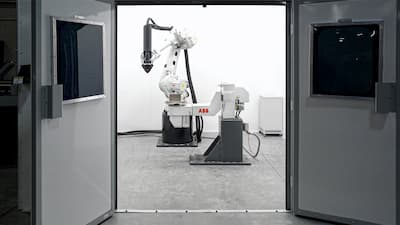
For much of human history, parts manufacturing was subtractive. The unformed material would have parts cut away to achieve the desired results. However, in the 1970s, a new manufacturing revolution was beginning. Computer-aided designs (CAD) was able to guide lasers pointed at liquid plastic, fusing it into solid plastic. Ultrafine layers were added to the product, creating, for the first time, additive manufacturing.
The first additive manufacturing was best used for rapid prototyping, creating scale models or small numbers of parts to test the design before moving to larger scale manufacturing. Over the years, additive manufacturing has been iterated upon and refined. More materials could be utilized, opening up a world of possibilities. Major tech companies developed instruments that could handle additive printing, or that were made using additively printed parts.
As early patents expired, many more companies were able to join the additive manufacturing business, leading to a boom in development and understanding. «3D printing» became a familiar term among the general public, and additive manufacturing grew widely accepted.
 Like with most technologies, as additive manufacturing developed, it became cheaper and easier to use on production lines. The benefits of additive manufacturing were incredibly attractive to certain industries, such as the aviation industry. With additive manufacturing, parts could be made that would have been infeasible before, such as hollow parts with interior support trusses to greatly reduce weight without sacrificing the strength or integrity of the part, thus increasing the efficiency of a jet engine, for example.
Like with most technologies, as additive manufacturing developed, it became cheaper and easier to use on production lines. The benefits of additive manufacturing were incredibly attractive to certain industries, such as the aviation industry. With additive manufacturing, parts could be made that would have been infeasible before, such as hollow parts with interior support trusses to greatly reduce weight without sacrificing the strength or integrity of the part, thus increasing the efficiency of a jet engine, for example.
Additive manufacturing, for all its advantages and growth, is not a perfect, infallible process, and it is just as important as ever for strong quality control of the parts being manufactured. Analysis techniques such as glow discharge spectroscopy can allow for bulk analysis and quantitative depth profiling of materials, for a full understanding of the elemental composition to ensure layers were built up correctly. A fully-equipped metallographic laboratory is also a key resource to measuring the strength and quality of material samples both during development and production processes.

This is why LECO offers a full solution for your additive manufacturing analysis needs. From the first cut of your sample to the final sputter in a GDS900, LECO’s solutions work together seamlessly to ensure your additive manufacturing products have the smoothest transition from start to finish. See what you’ve been missing with LECO.
Explore our metallographic solutions




